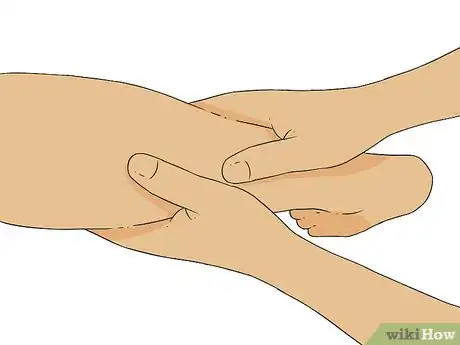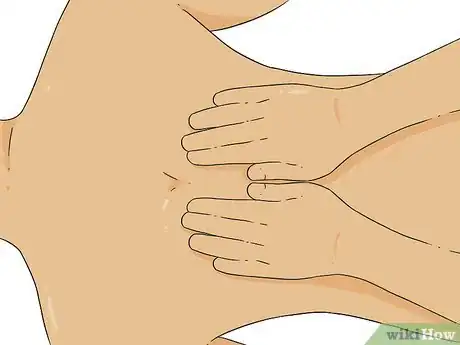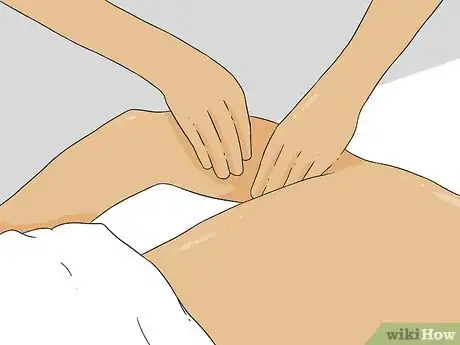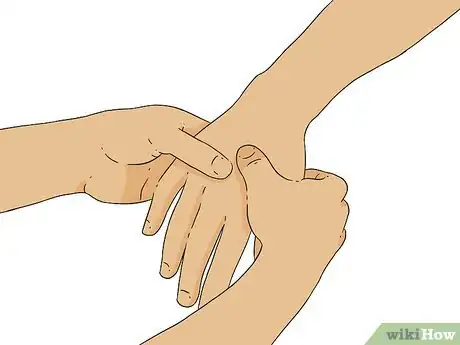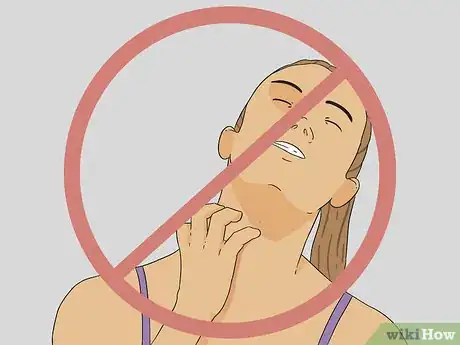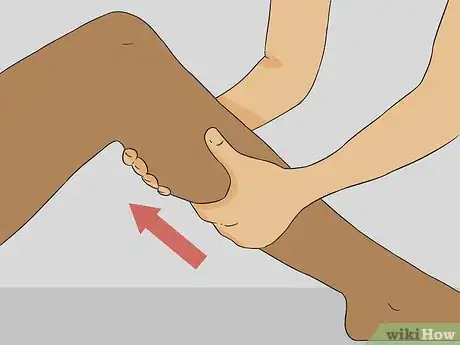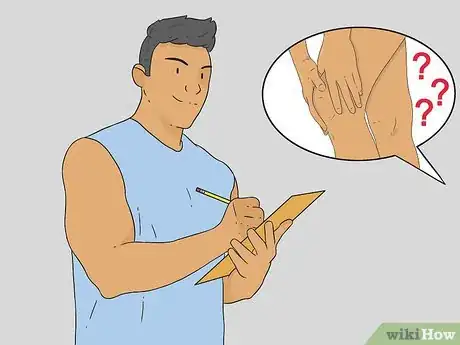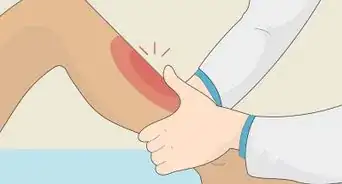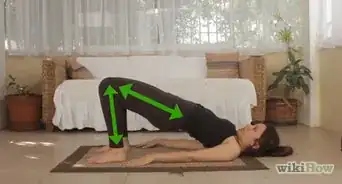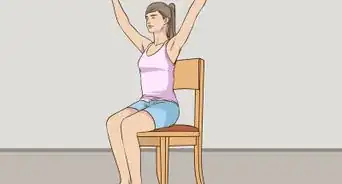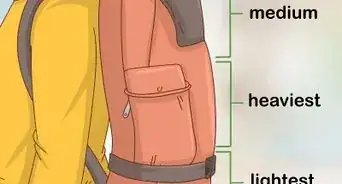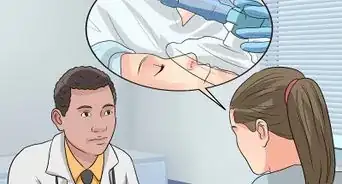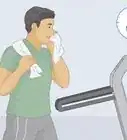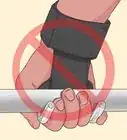This article was co-authored by Marty Morales. Marty Morales is a Professional Massage Therapist and the Founder and Owner of the Morales Method, a manual therapy and body conditioning business based in the San Francisco Bay Area and in Los Angeles, California. Marty has over 16 years of massage therapist experience and over 13 years of experience educating others on the best practices for massage therapy. Marty has over 10,000 hours of private practice logged and is a Certified Advanced Rolfer and Rolf Movement Practitioner, CMT. He has an MBA in Finance from Loyola Marymount University, Los Angeles.
There are 18 references cited in this article, which can be found at the bottom of the page.
This article has been viewed 63,215 times.
In deep tissue massage, you apply pressure with your hands, arms, and body weight to another person's muscles. Start by making sure the person is relaxed. You can use deep tissue massage on the back, arms, and legs, to name a few places, but be sure to follow a few rules for safety first.
Steps
Relaxing the Person
-
1Drape the person well. People are generally not fully clothed for deep tissue massage, and most people will not feel comfortable if they are completely exposed. Therefore, you need to cover the areas you're not working on at the moment to help the person feel more at ease.[1]
- You'll usually start the person face down on the table.
-
2Apply massage oil. Use a bit of oil on your hands. You don't need a large amount of oil for deep massage. Use broad strokes across the person's back to help spread out the oil. The heat from the strokes will also help melt the oil.[2]
- Check in with the person to see if they have any allergies to particular oils.
-
3Use some gliding. Gently run your hands over the person's skin. You don't want to start with working on deep tissue, as that will cause the person to tense up. Light gliding helps get the person warmed up and relaxes them, so that you can move on to deep tissue.[3]
- Basically, you'll use your whole hand to rub over the area where you'll be doing deep tissue massage. You'll only be applying light pressure at this time, just enough so your hands are felt.
-
4Massage with your fingers together. Use your whole hand with the fingers together. If you spread your fingers apart, you're more likely to pinch the muscle, which can be painful. Pretend you're sculpting clay, whether you're gliding your hands over the person or moving on to deep tissue.[4]
Applying Pressure to the Back
-
1Use the palm of your hand. As you move through the first gentle strokes, you'll feel the muscles start to warm up. When they do, you can use the palm of your hand and your body weight to start adding pressure to the strokes. Move your hand along the muscle that runs beside the spine down the length of the back. Apply pressure in slow, even strokes.[5]
- Try not to put pressure on any bone or the spine.
-
2Massage with your fingertips. Once the muscles have warmed up a bit more, start using your fingertips instead. You can use very small sideways strokes or a light rocking motion along the muscles, still keeping your fingertips together. Run your hands from the bottom of the back up to the shoulder.[6]
-
3Use your forearm to apply pressure on the back. Starting at the shoulder, place the forearm on the inner part of the back. Applying pressure with your body weight, run your forearm on the muscle that goes along the outside of the spine. Your forearm should glide from the upper body down the back in a fluid motion.[7]
-
4Go sideways along the bottom of the back. As your forearm reaches the bottom area of the back, turn your arm sideways to go just above the buttocks. Take the arm up the back along the outer edge and around to the shoulder.[8] With your hand towards the ground, move your arm down the shoulder towards the chest as you finish up.[9]
Massaging the Arms and Legs
-
1Use your forearm to apply pressure to the leg. Starting above the ankle on the back of the leg, use your forearm to add pressure to your strokes. Your forearm should be across the leg, and you add pressure with your body weight. Move up the back of the calf and thigh, and rest your arm for a moment just under the glutes. Sweep your arm in a fluid motion around the hip.[10]
-
2Apply pressure on the calf with your thumbs. Place your hands on either side of the calf with your thumbs in the middle of the calf, one behind the other. While applying pressure, move your thumbs up the calf, staying in the groove in the middle.[11]
- The muscle along the back of the calf is actually one muscle, the gastrocnemius muscle, but it has two heads. That means that there's a groove down the middle of it for your thumbs to follow.
- Alternatively, you can use your knuckles.
-
3Press up the upper arm with the heel of your hand. Starting at the elbow with the person on their back, move up the arm toward the shoulder with the heel of your hand. Use your body weight to help apply pressure.[12]
- You can also use your knuckles on the arm to apply pressure. Use small circular motions.
-
4Run your fingers up the forearm. With your thumb on one side and the rest of your fingers on the other side of the forearm (inside/outside), apply pressure on both sides. Move your hand up the arm towards the elbow.[13]
- You can also use both thumbs on the top of the forearm. Have your thumbs in a single line, not next to each other. Applying pressure, run them up the middle of the forearm.
-
5Massage the hand with your thumbs. Have both thumbs next to each other on the inside of the wrist. Move them together slowly over the wrist and up along the lifelines in the hand. Pay special attention to the muscled areas, including the area around the base of the thumb.[14]
- You can use tools like a tennis or lacrosse ball for a self-massage.[15]
Being Cautious
-
1Don't hit the spine. When you're using deep tissue massage, particularly on the back, you need to be careful of where you are massaging. Hitting the spine could cause pain or even damage, so you need to avoid massaging heavily in that area.[16]
-
2Avoid other vulnerable areas. If you're massaging the whole body, avoid the front of the neck, the abdomen, and the inside of the upper arm. These areas are more vulnerable to damage than others, so it's best to avoid them.[17]
-
3Discuss the person's health before beginning. Deep tissue massage, like most forms of massage, can cause problems if the person has certain health conditions. For instance, bleeding disorders, fractures, osteoporosis (severe), and deep vein thrombosis could all cause problems with massages.
-
4Move towards the heart. When working on the limbs in deep massage, it's best to apply pressure as you move towards the heart. That means going up the leg, for instance, instead of going down it with your massage techniques.[18]
- Applying deep pressure towards the heart helps keep the blood flowing that direction.
- Deep tissue massage may help lower blood pressure.[19]
-
5Pay attention to the person's reaction. A deep tissue massage shouldn't be overly painful. A little bit of pain may be okay, but if you notice the person is clenching their muscles or curling their toes, it's too much. You need to adjust your approach to make it softer. You can also check in with the person, asking them if it feels okay.[20]
Expert Q&A
-
QuestionWhat happens to your body when you get a deep tissue massage?
 Justyna KaretaJustyna Kareta is a Certified Master Massage Therapist and Owner of Lush Massage, a massage studio based in San Francisco, California. Justyna has over nine years of experience as a therapist and specializes in Lomi Lomi Hawaiian Massage and CranioSacral Therapy to soothe the nervous system and facilitate deep healing. She received her massage therapy training from the Southwest Institute of Healing Arts, is certified by California Massage Therapy Council, and is a member of the Associated Bodywork & Massage Professionals.
Justyna KaretaJustyna Kareta is a Certified Master Massage Therapist and Owner of Lush Massage, a massage studio based in San Francisco, California. Justyna has over nine years of experience as a therapist and specializes in Lomi Lomi Hawaiian Massage and CranioSacral Therapy to soothe the nervous system and facilitate deep healing. She received her massage therapy training from the Southwest Institute of Healing Arts, is certified by California Massage Therapy Council, and is a member of the Associated Bodywork & Massage Professionals.
Certified Master Massage Therapist Deep tissue gets into the deeper layers of the muscle so that you get all the benefits of a massage like increased circulation, and your muscles release more tension. Your body also releases toxins from the tissues, and it brings blood for healing to the areas that are massaged.
Deep tissue gets into the deeper layers of the muscle so that you get all the benefits of a massage like increased circulation, and your muscles release more tension. Your body also releases toxins from the tissues, and it brings blood for healing to the areas that are massaged.
References
- ↑ https://www.youtube.com/watch?v=Vwz6312-ikY&feature=youtu.be&t=20
- ↑ https://www.youtube.com/watch?v=Vwz6312-ikY&feature=youtu.be&t=26
- ↑ https://www.youtube.com/watch?v=pihxy4iUkcE&feature=youtu.be&t=33
- ↑ http://lifehacker.com/5871832/how-do-i-give-better-massages
- ↑ https://www.youtube.com/watch?v=Vwz6312-ikY&feature=youtu.be&t=85
- ↑ https://www.youtube.com/watch?v=Vwz6312-ikY&feature=youtu.be&t=133
- ↑ https://www.youtube.com/watch?v=pihxy4iUkcE&feature=youtu.be&t=68
- ↑ Marty Morales. Professional Massage Therapist. Expert Interview. 20 December 2019.
- ↑ https://www.youtube.com/watch?v=pihxy4iUkcE&feature=youtu.be&t=95
- ↑ https://www.youtube.com/watch?v=2sRk10WMuEg&feature=youtu.be&t=24
- ↑ https://www.youtube.com/watch?v=2sRk10WMuEg&feature=youtu.be&t=78
- ↑ https://www.youtube.com/watch?v=91qkFlz5T1s&feature=youtu.be&t=22
- ↑ https://www.youtube.com/watch?v=91qkFlz5T1s&feature=youtu.be&t=49
- ↑ https://www.youtube.com/watch?v=91qkFlz5T1s&feature=youtu.be&t=122
- ↑ Marty Morales. Professional Massage Therapist. Expert Interview. 20 December 2019.
- ↑ https://www.youtube.com/watch?v=pihxy4iUkcE&feature=youtu.be&t=56
- ↑ http://lifehacker.com/5871832/how-do-i-give-better-massages
- ↑ https://www.youtube.com/watch?v=2sRk10WMuEg&feature=youtu.be&t=52
- ↑ https://www.ncbi.nlm.nih.gov/pubmed/18315516
- ↑ Marty Morales. Professional Massage Therapist. Expert Interview. 20 December 2019.
About this article
Giving someone a deep tissue massage is a great way to help them with any muscle aches they've been experiencing, but it's important that you do it safely so you don't end up hurting them more. To get started, rub some massage oil over their back to help relax their muscles. Then, use the palm of your hand and some body weight to apply pressure as you stroke their shoulders and lower back. Once you've worked on these muscles for 5 to 10 minutes, apply pressure along the length of their back with your forearm. You can also use the points of your fingers to focus pressure on specific muscles that are still tense. Massage their arms and legs with the heal of your hand to finish. Throughout the massage, remember to avoid applying pressure directly to their spine and other vulnerable areas, like the front of their neck and the abdomen. For tips on how to create a relaxing atmosphere for your massage, keep reading!


